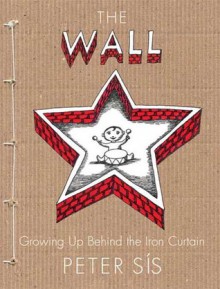Based on system , the unitized curtain wall segment in the glass curtain wall market is projected to grow at a higher CAGR during the forecast period, in terms of both value and volume.

Based on system , the unitized curtain wall segment in the glass curtain wall market is projected to grow at a higher CAGR during the forecast period, in terms of both value and volume.
Based on system , the unitized curtain wall segment in the glass curtain wall market is projected to grow at a higher CAGR during the forecast period, in terms of both value and volume.
 This is an unusual autobiography. It is more graphic novel than picturebook, and the graphic design offers features of a strong informational book (such as the white space). Sís' stylized cartoon illustration harks to the 1960s and 70s art he notes in the book--San Francisco magazines, psychedelic record album covers. It's fascinating to see the idealized view of the West, knowing that contrast is what makes it so.
This is an unusual autobiography. It is more graphic novel than picturebook, and the graphic design offers features of a strong informational book (such as the white space). Sís' stylized cartoon illustration harks to the 1960s and 70s art he notes in the book--San Francisco magazines, psychedelic record album covers. It's fascinating to see the idealized view of the West, knowing that contrast is what makes it so.
 There are essentially two narratives that run through The Wall: the story of one artist's childhood experiences, told in an ongoing thread at the bottom of the pages and on several "journal" pages, and the broader narrative of life in the Eastern Bloc during the Cold War, told in dozens of caption-like text bites alongside the illustrations. The two narratives are separate, and though they are clearly meant to inform one another, the necessity of leaving the personal narrative to take in the caption-like text can be jarring and in some ways makes the book more difficult to follow. The "journal" sections are interesting, but it is difficult to believe that these are actual excerpts from a child's journal--they seem too on the ball and mature.I wasn't too thrilled with this book. I found the disconnect between the main story and the factual quips jarring, and would rather have read this in two books, one a story about an artist's childhood in Prague and one a nonfiction book about the Cold War. I didn't find the confluence of the two goals to be harmoniously presented here. I liked Sís's illustrations, and they were fitting for his memoir-like story, but I didn't find this to be a particularly great way of communicating history.
There are essentially two narratives that run through The Wall: the story of one artist's childhood experiences, told in an ongoing thread at the bottom of the pages and on several "journal" pages, and the broader narrative of life in the Eastern Bloc during the Cold War, told in dozens of caption-like text bites alongside the illustrations. The two narratives are separate, and though they are clearly meant to inform one another, the necessity of leaving the personal narrative to take in the caption-like text can be jarring and in some ways makes the book more difficult to follow. The "journal" sections are interesting, but it is difficult to believe that these are actual excerpts from a child's journal--they seem too on the ball and mature.I wasn't too thrilled with this book. I found the disconnect between the main story and the factual quips jarring, and would rather have read this in two books, one a story about an artist's childhood in Prague and one a nonfiction book about the Cold War. I didn't find the confluence of the two goals to be harmoniously presented here. I liked Sís's illustrations, and they were fitting for his memoir-like story, but I didn't find this to be a particularly great way of communicating history.